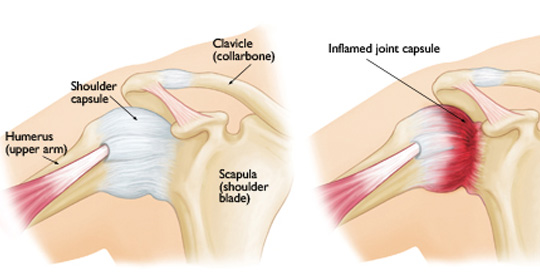
Adhesive Capsulitis or ‘Frozen Shoulder’
Although the exact mechanism causing frozen shoulder is unknown it is very common post-trauma, following injury and surgery. It can occur after injury to neural or muscular structures, or in some cases can occur spontaneously. It is most common between 40-60 year olds and more so in women. Although frozen shoulder often resolves on it’s own, un-aided it can take between 12 – 30months.Frozen shoulder is characterised by a systematic process in which the shoulder becomes less painful albeit more stiff causing trouble with undressing and reaching behind.A typical Physiotherapy assessment will involve observing movement, testing strength, and range of motion. The Physiotherapist will assess the ability of your nerves to glide to rule out all other shoulder problems.With the assessment combined with the list and timeline of symptoms your physiotherapist will be able to give a well-reasoned diagnosis.
Leave a reply
Treatment will consist of some of the following:
- Stretches of various muscle groups to loosen the surrounding muscles
- Massage in order to release surrounding tissue
- Strengthening exercises to decrease the load on the shoulder joint
- Hands on modalities to stretch the joint capsule and help restore movement.
Research shows that a physiotherapy programme can help in shortening the period of frozen shoulder and also aid in a more complete recovery.



Leave a reply